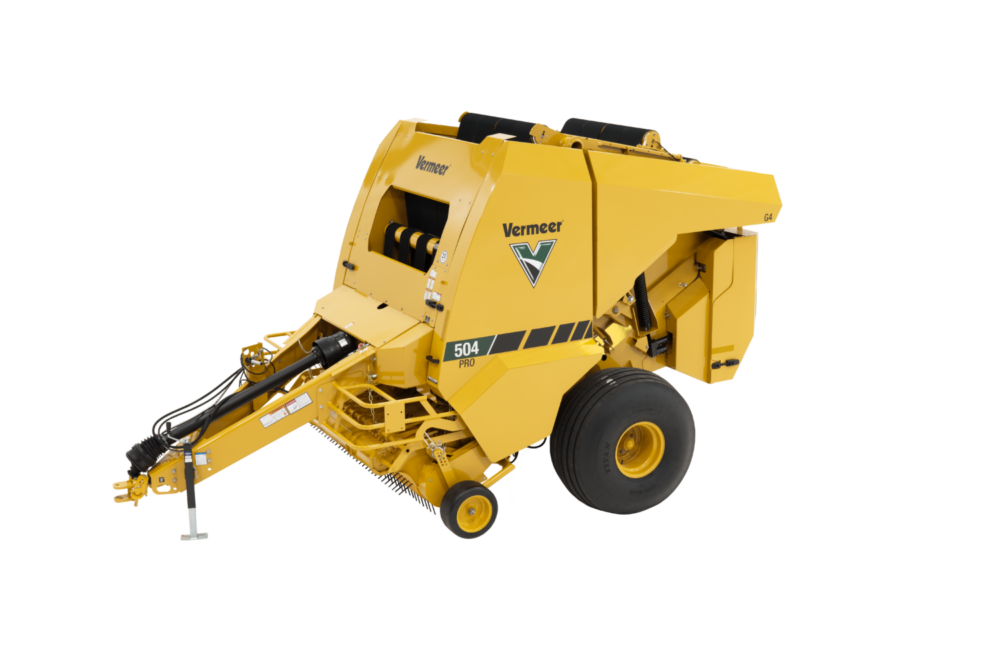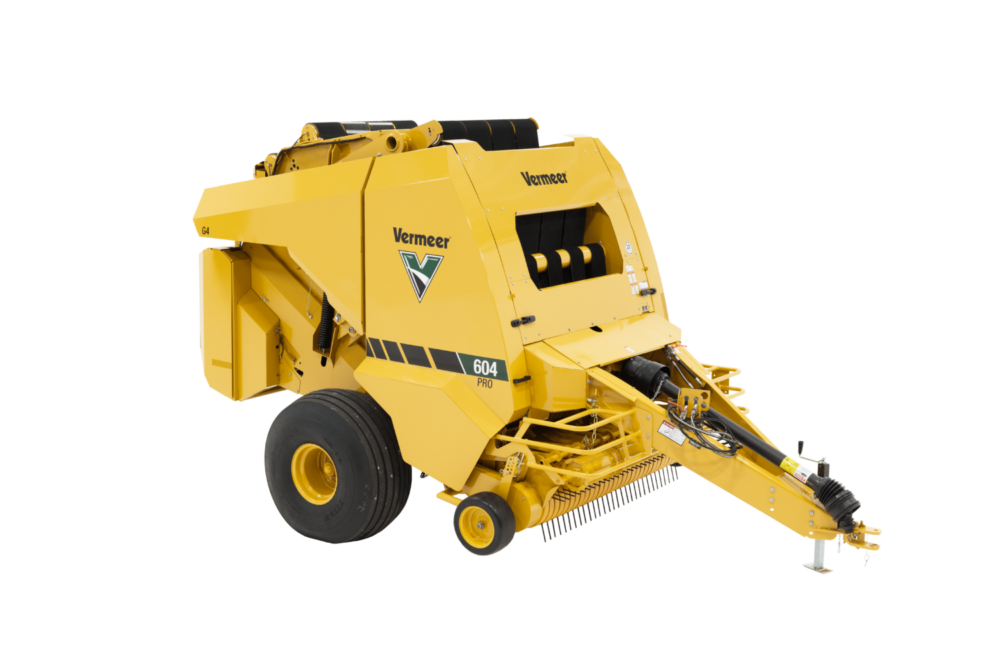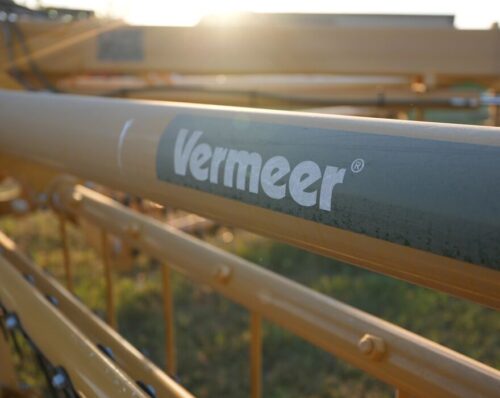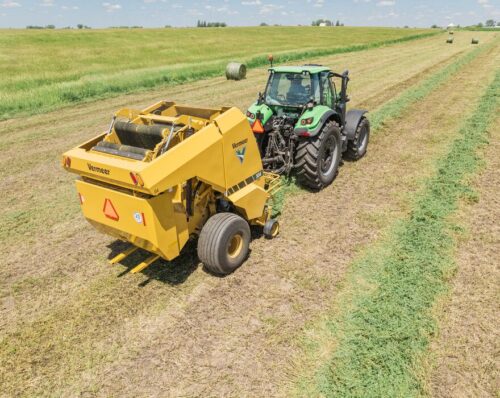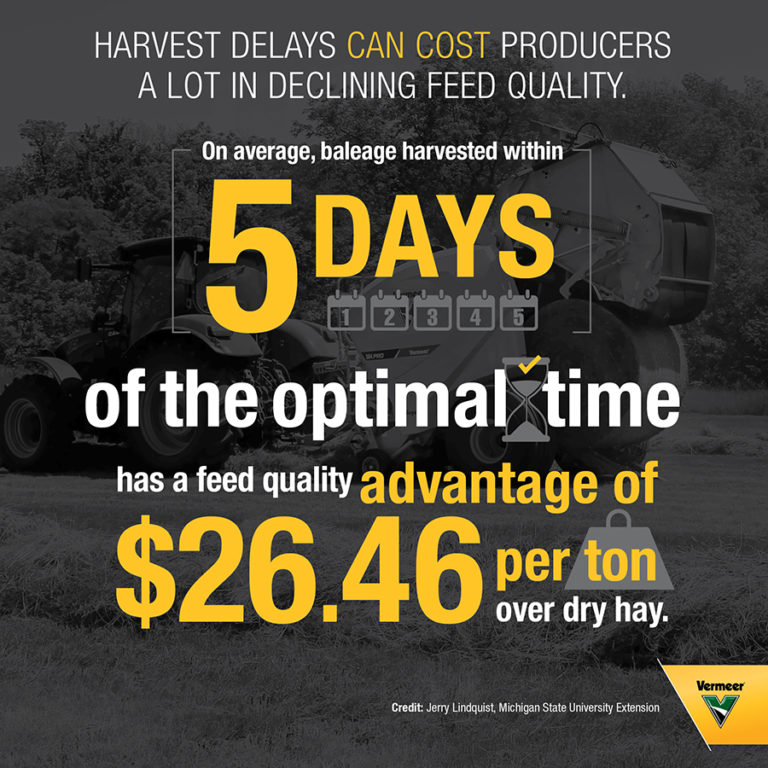
Will Baleage Pay? Consider Feed Needs, Economics
January 2019
Baleage is growing in popularity among forage and cattle producers for a few reasons, but does it meet the nutritional and economic needs of your operation?
Cutting and baling at higher moisture levels — usually ranging from around 40 to 70 percent — widens the harvest timeframe, while wrapping the forage promotes fermentation and yields a product that’s often more palatable to cattle and easier to store for a longer period of time. There are nutritional benefits to baleage, some associated with the palatability of the feed source and others relating to the forage supply’s dry matter, protein and energy content.
“Farmers are switching to and liking baleage because it takes less drying time to get wet hay to the proper stage of moisture than it does dry hay — usually 24 to 48 hours less, making harvest season easier,” according to a report from Jerry Lindquist, Michigan State University Extension grazing and field crops educator.
Producing baleage requires specific equipment. A high-moisture baler and bale wrapper — either in-line or individual — are necessary to properly harvest, store and manage baleage. There’s no one-size-fits-all solution; each operation should carefully examine the economics of baleage versus dry hay, and there are a few benchmarks that are key indicators of its feasibility.
To determine whether baleage is an economical option, take into account production costs and feed value based on herd size and life stage of the animals fed. Lindquist said herd size is a key variable to identify early on. The viability of baleage grows with herd size for both beef and dairy cattle.
“Herds with as few as 75 cows could possibly cash flow [bale] wrappers. Those with 150 cows or more are highly likely to see a significant advantage to baleage,” Lindquist said. “Even a herd of 80 cows should not give up on the idea of baleage.”
Much depends on the specific animals you’re feeding. Dry cows have different nutritional needs than yearling calves, for example. Matching the energy and nutritional value of your forage to the needs of your animals — whether that need comprises simple maintenance or growth — is important in gauging whether baleage is right for your operation.
"Ask yourself, ‘In my production system, where am I best suited to see benefits from this high-quality forage?’"
“Ask yourself, ‘In my production system, where am I best suited to see benefits from this high-quality forage?’” said Rachel Martin, Ph.D., beef nutritionist with Sioux Nation Ag Center in Sioux Falls, South Dakota. “You don’t want to put baleage into your dry mama cows. They don’t need that higher-quality diet because they’re not growing, but just maintaining their bodies. Look at the nutritional analysis of what you’re feeding and pair with nutritional requirements of animals. You’re never going to successfully grow weaned calves on a dry cow diet because there won’t be enough energy or protein. It’s just like with people — if you’re a professional athlete, you need more energy and protein, but not if you’re a couch potato.”
Nutritional value variables
Baleage lacks much of the dry matter that comprises dry hay by virtue of higher moisture levels at harvest time, but that moisture level typically drives the higher nutrition of baleage.
“The feed quality of baleage is higher than the same comparable dry hay because more forage leaves are retained and harvested in the process of making baleage than dry hay,” Lindquist said. “Harvesting and storing [baleage] is one of the most efficient ways to store large volumes of wet forage in a very timely manner that maintains its quality and mixes well with other feed in a ration when it is ready to be fed.”
Research has shown how baleage leads to improved weight gain at different points in the lives of beef cattle. Though most research on baleage has been conducted with dairy cattle, baleage has been shown to have a profound influence on overall gain when compared to feeding dry hay, according to Martin. A specialist in ruminant nutrition, Martin has studied the effects of baleage as a feedstock, especially in backgrounding, a critical growth time for calves. On top of simply identifying the need for higher-quality feed based on whether you’re growing or maintaining animals, she said it’s important to maintain balance between nutrition and dry matter, especially when considering a feed source like baleage.
“It’s important to think about your feed source on an as-fed basis. I tell people to do the math and consider the pounds of crude protein and energy on top of dry matter,” Martin said. “Figure out the dry matter you need and conduct forage tests, because you can match what you’re feeding to what your cows need. An animal needs 2-3 percent of its body weight in dry matter, so if we’re talking about a 1,000-pound (453.6 kg) mama cow, she may have to eat 120 pounds (54.4 kg) to get those 20 or 30 pounds (9.1 or 13.6 kg) of dry matter if you calculate it on an as-fed basis.”
Having the right moisture level — namely not too wet — is important for feeding the right mix of dry matter and nutrients in your baleage.
"Having the right moisture level — namely not too wet — is important for feeding the right mix of dry matter and nutrients in your baleage. "
“If it gets too wet, the animal literally can’t eat enough of it,” said Martin, whose Ph.D. dissertation addressed feed value differences between high- and low-quality ryegrass baleage. “High-quality ryegrass baleage is significantly wetter than lower-quality ryegrass baleage, so the lower-quality baleage produces better performance because it has 50 percent dry matter versus 30 percent. Cattle are able to eat more efficiently instead of constantly flushing moisture out through their bladders.”
The economics of baleage
For baleage to be sustainable for your herd, it has to be economically feasible. Before digging into the specific cost and return data, you can learn a lot by looking at your operation, machinery and feed needs, Martin said. Start with a simple question: “What is the best use of your financial resources and time?” she said.
In a recent analysis, University of Tennessee at Martin Associate Professor Ross Pruitt found that though the cost for the baleage itself and the quantity needed are both higher than feeding dry hay, feed values are higher, decreasing and sometimes eliminating the need for feed supplements.
In his research using University of Georgia Extension forage budgets, Pruitt found a major cost advantage in winter annual baleage when compared to feeding the necessary average- or poor-quality hay to yield the same weight gain in a test group of 1,200-pound (544.3 kg) beef cows. Though the quantity of baleage was higher than average and poor hay (more comparable to good hay), supplemental feed needs were a fraction of that required with dry hay. Overall total cost per cow was $254.28 per head for winter annual baleage compared to a range of $294.47-$358.81 per head for average and poor hay.
A deeper dig into cost data like this reveals that reaching those numbers is a more complex equation. Forage dry matter and relative feed quality (RFQ) are key variables in determining the feed’s cost, which makes up the majority of the overall cost of using baleage versus dry hay (with the rest comprising machinery and management costs).
In a 2004-2005 study spanning three states, researchers found a relationship between alfalfa cuttings and a gradual decline in RFQ. Based on market prices, they were able to quantify the value of RFQ per “unit” in hay. Based on 2017 prices, each unit of RFQ carries a cost of $1.06 in hay with a moisture level of 16 percent. Because that moisture level causes dry matter to decline, the cost of RFQ was found to be $1.26 per unit. Based on these numbers and the flexibility in harvest in a baleage production system, Lindquist said there’s a clear path to determining the value of baleage.
“If we can assume the process of making baleage allows a farm to complete each cuttings harvest in 10 days versus a dry hay system with weather delays taking 20 days past optimum, the following financial projection can be offered based on the research trial. Baleage’s average forage harvest would be five days beyond optimum (half of a 10-day harvest) and dry hay would be 10 days beyond optimum (half of a 20-day harvest),” Lindquist said. “For baleage, the average quality loss would be five days x 4.2 RFQ units x $1.26 = $26.46 per ton of dry matter. For dry hay it would be 10 days x 4.2 RFQ x $1.26 = $52.92 per ton of dry matter. Thus, if baleage on average allows a farm to complete baled forage harvest 10 days earlier per cutting than the harvest of dry hay, then baleage would have an advantage in feed quality based on harvest maturity alone of $26.46 for every ton of dry matter forage harvested.”
The machinery component
Once you’ve established the benchmark for the value of baleage versus dry hay in terms of its feed value, the next step in determining whether it’s feasible on your operation is identifying machinery costs. Producing baleage does require specific machinery, namely a high-moisture baler and bale wrapper. A Vermeer 504 Pro baler, for example, is built to handle the demands of heavy, wet material like that comprising baleage. It functions just as well in lighter, drier materials, making it a good fit for any operation producing both dry hay bales and baleage. Bale wrappers are also additional cost but some producers not only use their wrapper to wrap wet hay, but are also wrapping dry hay to help preserve future storage losses.
Determining whether baleage is cost-effective for your operation depends on herd size, forage quality and machinery. Hay loss is another variable for which to account. Though baleage is typically a much more efficient use of available forage, it’s not without waste altogether. Pruitt recommends using between 20 and 25 percent for dry hay loss and around 5 percent for baleage loss. Doing so will help zero in on the per-head cost to feed baleage versus dry hay more accurately.
“When they compared in-line wrapping baleage systems and individual bale wrapped systems to dry hay round bale systems, estimating the forage savings and the operational costs, the in-line system had a net savings advantage of $46.96 per cow per year and the individual wrapped bale system had a $34.89 savings per cow over dry round baled hay each year,” Lindquist said of the LSU study.
Pruitt said his research showed total feeding cost for baleage was around $250 per head for a 1,200-pound (544.3 kg) cow during a 150-day period. Though the cost for dry hay to reach the same dry matter for that same period ranged from only around $110 to $170 per head, the required supplemental feed cost meant the total dry hay cost ranged from $255 to $360 per head, giving baleage a distinct cost advantage, especially compared to average and poor quality hay.
"Quality matters. The nutrient value of the forage impacts whether or not baleage is worthwhile."
“The study shows improved feeding quality and reduced storage losses. It makes the purchase of baleage technology more economically feasible,” Pruitt said. “Quality matters. The nutrient value of the forage impacts whether or not baleage is worthwhile.”
In research conducted by Louisiana State University researchers, Lindquist said there’s a clear benefit to feeding baleage based on savings on the feedstock’s nutritional value and the machinery costs associated with producing it.
To learn more about baleage and the equipment required to produce it, contact your local Vermeer dealer or start researching your equipment options here.

